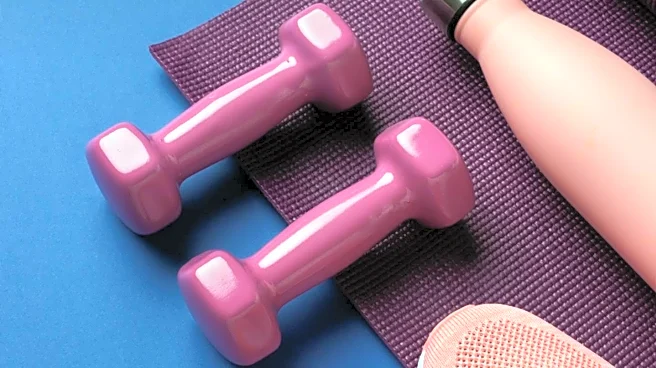What's Happening?
Heel protectors are gaining popularity among individuals who experience blisters from wearing boots. These products are designed to provide cushioning and protection, preventing new blisters and alleviating discomfort from existing ones. Users have reported positive experiences, noting that heel protectors are soft, flexible, and effective in various footwear, including sandals and rainboots. Testimonials highlight their ability to reduce pain and allow for longer periods of wear without irritation. The protectors are particularly beneficial for those who engage in activities like horseback riding, where boots are commonly worn.
Why It's Important?
The introduction of heel protectors addresses a common issue faced by many boot wearers, offering a practical solution to prevent blisters and enhance comfort. This innovation is significant for individuals who rely on boots for work or recreational activities, as it can improve their overall experience and reduce downtime caused by foot pain. The growing demand for heel protectors may influence the footwear industry, encouraging manufacturers to incorporate similar features into their designs. Additionally, the popularity of these products highlights consumer interest in comfort-focused solutions, which could drive further innovation in the market.
What's Next?
As heel protectors continue to gain traction, manufacturers may explore opportunities to expand their product lines, offering variations tailored to different types of footwear and activities. The success of these products could lead to collaborations with boot brands, integrating protective features directly into new designs. Consumer feedback may also guide improvements in materials and design, enhancing the effectiveness and appeal of heel protectors. The trend towards comfort-focused footwear solutions may inspire other innovations in the industry, addressing additional pain points for consumers.
Beyond the Headlines
The rise of heel protectors reflects broader trends in consumer preferences for products that prioritize comfort and practicality. This shift may influence the footwear industry's approach to design and marketing, as brands seek to meet the demand for solutions that enhance the wearing experience. The focus on comfort also aligns with the growing interest in wellness and self-care, as consumers increasingly seek products that support their physical well-being. This trend may lead to increased investment in research and development, driving innovation in the footwear sector.










